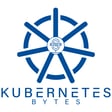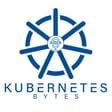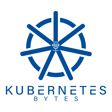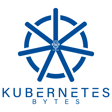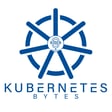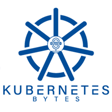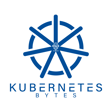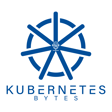Become a Creator today!Start creating today - Share your story with the world!
Start for free
00:00:00
00:00:01

How Kubernetes operators use storage
In this episode of Kubernetes Bytes hosts Bhavin Shah and Ryan Wallner discuss Kubernetes Operators and how they use persistent storage. Operators are software control loops that extend Kubernetes to automate and provide ease of use for application such as databases. Learn about some database operators and how they utilize storage.
Check out our Pod Page! https://www.podpage.com/kubernetes-bytes/
Show links
- https://blog.kubecost.com/blog/series-a-funding-announcement/
- https://www.cncf.io/wp-content/uploads/2022/02/CNCF-AR_FINAL-edits-15.2.21.pdf
- https://techcrunch.com/2022/02/24/kubernetes-development-platform-okteto-raises-15m-series-a/
- https://signadot.com/blog/announcing-public-beta/
- https://www.businesswire.com/news/home/20220224005128/en/Zenoss-Launches-Advanced-Monitoring-Capabilities-for-Kubernetes
- https://www.businesswire.com/news/home/20220223005265/en/TrilioVault-for-Kubernetes-Now-Available-in-AWS-Marketplace
- SODACODE - Data and Storage Hackathon - https://events.linuxfoundation.org/sodacode/
- https://www.robin.io/featured-press/rakuten-symphony-agrees-to-acquire-leading-us-based-cloud-technology-company-robin-io-to-deliver-highly-integrated-telco-cloud-for-mobile/
- https://operatorhub.io/
- https://operatorframework.io/operator-capabilities/
- https://github.com/cetic/helm-postgresql
- https://kubernetes.io/docs/concepts/extend-kubernetes/operator/
Transcript
Introduction to the Podcast
00:00:03
Speaker
You are listening to Kubernetes Bites, a podcast bringing you the latest from the world of cloud native data management. My name is Ryan Walner and I'm joined by Bob and Shaw coming to you from Boston, Massachusetts. We'll be sharing our thoughts on recent cloud native news and talking to industry experts about their experiences and challenges managing the wealth of data in today's cloud native ecosystem.
00:00:28
Speaker
Good morning, good afternoon, and good evening wherever you are. We're coming to you from Boston, Massachusetts. Today is March 2nd, 2022. Hope everyone is doing well and staying safe.
Personal Updates and Weather
00:00:41
Speaker
Let's dive into it. Bhavan, we made it to March. I can feel the sunlight becoming longer and longer and longer. It's doing great things for me. How about you?
00:00:51
Speaker
I'm excited. As soon as it can get warmer and the daylight saving thing switches off, I'll be happy. I'm missing those outdoor runs and outdoor walks. And since I moved to a new house this weekend, I no longer have access to a gym. It's just harder to get there, right?
00:01:13
Speaker
Now it's really difficult to get motivated to actually drive to a gym or walk to a gym. I just had to take the elevator down in my previous apartment. So yeah, I need the weather to be good. Maybe you need to jump on the peloton bandwagon and just get one in your office.
00:01:31
Speaker
I don't know. We'll see. We'll see. I'll definitely let you know if I end up doing that job. Well, that sounds like even busy then. I'm guessing you've been in full pack and unpack mode then this past weekend, huh? Yep. Yeah. I got my, I deleted myself from the previous node.
00:01:51
Speaker
spun myself up in a new house. I had a busy weekend, lots of packing, cleaning, moving stuff. And I think it snowed on Friday. So for the movers, which I had hired for on Saturday, I had to come in early. I think I did it on Friday evening, shoveled some snow, cleared some pathways. I was like, okay, this is going to be a thing that I have to do as a homeowner. So just getting used to it.
00:02:16
Speaker
Welcome to owning the home in the Northeast. Yes. Lots of shoveling. I, you know, did myself a lot of snow blowing. So, you know, I don't think you need one of those and where you are, but not right now. I think for next winter, I think I'm waiting for my upstairs neighbors to show up. Like they closed during the same timeframe. And then we'll talk about like, okay, how can we conquer these things together?
Episode Focus: Kubernetes Operators and Storage
00:02:40
Speaker
Yeah, it'll just be wind up being one of you. That's how it works. I hope it's not. Cool. Well, today is just you and I today. We're going to be talking about Kubernetes operators and how they use storage. So back to kind of a one-on-one episode, I would call it. Back to school.
00:03:02
Speaker
Yeah, back to school. Always fun to do these. But before we do that, let's cover some news that we have going on. Why don't you kick it off? Yep. So I think one of the things that I missed to mention on our last episode was the CN survey results for the CNCF survey. They came out and now it's official. Like on every page, we use the term Kubernetes has crossed the chasm. It's in mainstream adoption. Everybody's using Kubernetes.
00:03:30
Speaker
We'll link to the actual survey results in the show notes, but a couple of things to highlight, 79% of the respondents, I think the respondents were around 1,500, 1,600 people. Close to 80% of those are using Kubernetes hosted platform. The number of people that are spending the time and resources to build DIY solutions and managing everything on their own is reducing.
00:03:53
Speaker
And then if we look closer at it, 39% of those are running on EKS, 23% are running on AKS. And I couldn't really figure out the number for GKE, but it looks like majority of people out there are using Amazon or if not Amazon, but at least as a certified Kubernetes hosted platform.
00:04:14
Speaker
But yeah, that was one. And then we had a bunch of funding rounds and acquisitions that we wanted to cover. If you talk about funding rounds, two companies, two startups announced something in the same ecosystem around developer sandbox environments that can be deployed on a big Kubernetes cluster. So each developer can get access to a full-fledged production level sandbox on a Kubernetes cluster on their test dev cluster, where they can try out
00:04:43
Speaker
Any changes that they make in their code base and test it out without having to actually deploy it to production or deployed to a staging environment. The first company that raised series A funding round of 15 million is called Octato. That's one.
00:04:58
Speaker
Cigna Dot, they just came out and announced a public beta, and they announced like a $4 million seed investment. So again, if we follow the trend of the CNCF survey report, like we have crossed the chasm, now companies will start showing up around how to make efficient, how to make use of these resources or of Kubernetes efficiently. So we have developer sandboxes, we have another company called CubeCost that again announced a series A funding round. They
00:05:28
Speaker
They want to help organizations.
00:05:31
Speaker
identify where they are not spending money effectively, so identifying those inefficient practices, pointing out over-provision resources, and then those are short-term fixes, but they also plan to provide best practices on how to fix things for the longer term so they don't end up getting a really huge bill at the end of the month or end of the year by just reusing Kubernetes. I think there is around $25 million of funding down.
00:05:59
Speaker
And then from an acquisition perspective, I know you wanted to talk about our friends at Robin.io.
Industry News: Acquisitions and Funding
00:06:06
Speaker
Why don't you kick it off? Yeah, sure. So Robin.io was acquired by Rakuten Symphony, which
00:06:16
Speaker
is a cloud-native platform, Edge, Telco. I believe Robin was a customer of theirs for a few years, but officially was acquired. That's really exciting to see. Speaking of crossing the chasm, we're seeing more and more of these companies such as our parent company, Portworx, acquired by Pure and Maya data, I believe.
00:06:42
Speaker
acquired by DataCore, SUSE Longhorn, you know, a Longhorn Rancher coming across into SUSE. And so we're really seeing that chasm be crossed. And I know that's probably an overused word in your vocabulary these days, but to me, it's really nice to see, you know, the maturity of the market, especially in the storage space that we're starting to see the investment and dedication to these types of workloads.
00:07:11
Speaker
Really, really good stuff. Yeah, again, I find that interesting. Now Rakuten, for people who don't know, look at the Super Bowl ad, but they can now own the entire edge stack. So I think Robin just fits in and they can now standardize their deployments, which they did, but now they control the whole stack. So a good acquisition. We didn't see any numbers come out of any of the blog posts here. So that's undisclosed. Absolutely.
00:07:39
Speaker
Um, the other thing I had on here was a, uh, data and storage hackathon from soda code. If you know what, you don't know what soda code is. Um, it's, uh, brought on by the soda foundation. And, uh, I had to ask myself this as well as what is soda, uh, and not that, uh, sugary drink that you have. Uh, it's an open source unified auto autonomous data management framework or data mobility from edge.
00:08:05
Speaker
to core to cloud. And there's a lot of components in the SOTA Foundation focused around data mobility, data protection, lifecycle, unified storage, cloud native storage, data governance, data orchestration.
00:08:21
Speaker
data energy, that's a new one. And they have this hackathon event going on through May 25th and 26th, really focused on data and storage, right? It's the data and storage hackathon. So I found this recently and really interesting piece if you're in the community and want to get involved in this, it really does aim at everyone from beginners to professionals.
00:08:47
Speaker
So if you just want to get involved, fix a few things or really dive into something, I think it's targeted at everyone. So definitely go check that out. We'll put those in the show links.
00:08:59
Speaker
Yeah, maybe now that all the startups like storage startups have been picked up, we need some new ones. So something can come out from this hackathon. Well, I think we're going to see, you know, potential companies or potential projects, you know, more and more often be built on top of these core
00:09:17
Speaker
cloud native storage capabilities right and that's the real value now is that we have this uh we're standardizing on what cloud native storage is and you know csi's you know gotten to a point of maturity and these companies are you know binding maturity as well now we're going to see those other things on top of it so what can you do in the ai space or ml space or
00:09:40
Speaker
uh, you know, data energy space, even whatever that is. I have to actually go look that up, but I was reading that some data energy sounds great. It says data energy is a new era of focus that tries to profile analyze and optimize the energy consumption or data management. So every, every installation comes with a sustainability report. Yeah. I wonder what ours is.
00:10:03
Speaker
I just had a couple of additional things to highlight.
New Kubernetes Features and Tools
00:10:07
Speaker
And from a news perspective, Trillio Vault, one of the vendors in the ecosystem announced that their offering is now available on the AWS marketplace. So similar to how all the vendors, including ours, including us have listings on the marketplace, which gives integrated billing, flexible payment options, all of those can now apply to Trillio customers as well.
00:10:27
Speaker
And then Zenos, a monitoring tool that I used in a couple of jobs back. Now they announced like support for Kubernetes and launched advanced monitoring capabilities for Kubernetes. So doing things like overall cluster health monitoring, pod monitoring, node monitoring, dashboards.
00:10:45
Speaker
So for customers that are already using Zenos, this might be a good add-on that they can get if they are starting to use Kubernetes in their on-prem environment or in their cloud environment. So again, link in the show notes for the actual blog post. And that's it for the news.
00:11:05
Speaker
All right. That was a good bit of news. I feel like that was a good week.
Deep Dive: Kubernetes Operators
00:11:09
Speaker
Good two weeks of news. Some some weeks seem a little slow, but this is a fun one. All right. So today's topic, but.
00:11:19
Speaker
are Kubernetes Operators and how they use storage. I guess less about what operators are, but we'll discuss it, but more about how they use storage and how it differs from maybe using storage directly in pods, deployments, or staple sets. We'll get into it. So, Bobbin, why don't you start off with that really good explanation about what a Kubernetes Operator is, and then we'll double-click on it.
00:11:45
Speaker
Perfect. At a very high level, an operator is a way to package, run, and operate or maintain a Kubernetes application. By building an operator, you build on top of the Kubernetes abstraction. Let's say Kubernetes is well known for maintaining desired state of all of its resources. These can be pods and deployment objects.
00:12:10
Speaker
And like any communities object that you can think of an operator does the same thing maintains a desired state for a custom resource or a custom application that you want might want to run on communities. And one of the things that i found the foot like people describing what operators are and i really like is operators are software srs.
00:12:31
Speaker
So how an SRE is responsible for deploying, managing the life cycle and making sure the application is always up and running. They make sure that the data is properly backed up and protected, ready for disaster events. Operators do the same thing.
00:12:46
Speaker
for applications running on Kubernetes, so automated SRE kind of thing, where they understand how the application is built, they know how to deploy it on Kubernetes, and they can use any number of Kubernetes resources, right? And we'll talk about how operators use stateful sets or divin sets or deployment objects, but an operator understands how an application needs to be deployed, and they understand how to maintain the desired state, so it will always keep checking whether the desired state matches the current state.
00:13:15
Speaker
and then how to fix it. And also the fact like if I need to upgrade the version, how to properly or in a supported way upgrade an application or upgrade a custom resource from a version one to version two without causing any trouble issues with the application. So, operators are software SREs. I think one thing if you want to retain that can be my one key takeaway. Yeah, I really like that analogy. I mean, honestly, in my mind, you know, I pick my favorite SRE and I just like
00:13:42
Speaker
you know, dehumanize them, turn them into like a Terminator SRE in my head and just have, you know, I see them just like doing a whole bunch of things. Even the Kubernetes documentation says the key of a human operator is to manage that service or set of services. And really, you are codifying that.
00:13:59
Speaker
And in the Kubernetes documentation, also really the key point of this is you're extending Kubernetes. You're taking core capabilities of the Kubernetes orchestration system and extending it to do some more interesting things, specifically around control loops. The thing that they talk about, which is a good analogy, is a thermostat. You're always
00:14:24
Speaker
watching the temperature whenever changes and you need to change something about it or take action that happens that's what an operator is doing effectively is looking for something new that someone needs.
00:14:38
Speaker
upgrade, a management of something, deployment, you know, those kind of things. So really, really a lot more that we could dig into as far as what operators are and what they do. But we're going to change gears and sort of dig into how they use
00:14:56
Speaker
storage and maybe some of the examples that we have that we can talk about. So the first thing I want to say is that operators, given that key component that it's managing other things and extending Kubernetes, operators actually wind up managing existing resources
00:15:15
Speaker
or resources that Kubernetes already understands. So we've on this show talked about pods before, we've talked about deployments before, we've talked about stateful sets before, and each one of these things can use storage, whether that's through defining a persistent volume claim.
00:15:32
Speaker
tied to persistent volume or having a persistent volume claim template like those used in a staple set. And ultimately what's happening is that the operator has some sort of input. Now this varies, I think, across many of the operators and how they're actually configured because there's not really a standard way that they say
00:15:54
Speaker
you know, hand them a storage class you want to use. Although ultimately, that's usually what it boils down to, is that your operator has some sort of input of, hey, what storage do you want to use?
00:16:07
Speaker
And that usually comes in the form of a storage class as an SRE also would probably be involved in knowing what that storage class can provide as far as IOPS and performance and data protection, those kind of things that are defined in the storage class. So you end up giving the operator this thing and say,
00:16:25
Speaker
I want to deploy this thing that you are managing, and maybe it's a Cassandra cluster, right? And I want you to use this type of storage class because I know this Cassandra cluster is a development storage class. So here you go, Mr. Operator.
00:16:44
Speaker
I want a Cassandra cluster and I want you to use the storage. And that's kind of the beauty of it is you're really only giving a minor amount of configuration and understands the rest, right? You don't have to understand how that thing is actually deployed, how it comes up one note at a time, like in a staple set, a lot of that's already managed, how to run a specific version. A lot of that's just in a basic configuration file.
00:17:15
Speaker
Yeah, go for it. As you said, all we need to do from a storage perspective is provide that storage class. The other way to look at it is operators care about applications first, so they try to abstract away how that application should be deployed on Kubernetes and how many resources should be deployed and what different kinds of resources should be deployed.
00:17:37
Speaker
But that's the benefit of using operators for applications with a cloud native storage layer that understands how these applications write data to the underlying disk. So the operator can make sure that your application is deployed and maintained and operated and upgraded successfully. But that's where it ends. After that, the storage is handled by a different entity. So there is some sort of
00:18:01
Speaker
sandboxing or shared responsibility here that make sure that your application is successfully running and gets the best performance storage on the back.
00:18:09
Speaker
Yeah, and that is a sense that storage classes do make that storage component pluggable, in a sense. But that's also where things get a little muddier. Now, depending on what operator you're choosing, that operator has some opinion built into it. As an individual SRE, you manage a service a certain way. You use a certain set of tools to do certain things.
00:18:36
Speaker
An operator is no different, right? Going on that analogy is that an operator has a built-in mechanism for how it does things. So whether you're using, you know, some examples for Cassandra since we just talked about that is, you know, there's InstaCluster, there's CastCop.
00:18:52
Speaker
I think, or Castoff. DataStax has one. DataStax has the Cast operator. Then there's the Cassandra operator by SkyUK. The point is that each of them bring various levels of features, ease of use, performance, security, documentation even. And it really is something you need to research because it does opinionate those things, right? So for instance,
00:19:20
Speaker
All these may be able to generally accept a storage layer, maybe because Andrew is not the best idea because sometimes it's run without volumes. But if you're using Postgres or MySQL even, you'll have that standard kind of thing to look for. How do I give it my data layer?
00:19:39
Speaker
And once you figure that out, then it's, okay, well, how do I then configure users or roles? Or does it bootstrap actual databases for me and ACLs in there? Does it optimize the performance of whatever backend it's really using, right? What kind of security does it automatically do? Some of the answers are it might not do that.
00:20:03
Speaker
Some of these operators that are maybe open source or part of the community is those things are not developed yet or lacking or purposely not developed yet because they don't want to go down that path. And I think it goes further to say that as an operator and as a shop looking at these things, it does make your life generally easier in terms of managing deployment. Many of these things in a cluster, how do you upgrade them? How do you cycle them?
00:20:32
Speaker
It usually has a lot of benefits there, but keep in mind those assumptions because you may have, for instance, a backup and restore capability or tool or piece of software that you want to use for your applications. Maybe you're already using it.
00:20:52
Speaker
A lot of these operators will sometimes have a built-in mechanism for how to back up and restore that database that it manages. Meaning, for Postgres, maybe it uses a PG backup, PG restore. It's looking directly at the database. It has an input of some object storage. But maybe you use a tool like Valero or something like that that looks at all of the applications in a namespace.
00:21:22
Speaker
And you want to still use that. Well, you want to make sure to test those things. I know, personally, Bob and I have tested a number of these things. And sometimes some of these operators make assumptions about how those things work. And there are challenges. I'll stop there because I feel like I've been talking a while.
00:21:41
Speaker
You chime in. Those are good points, like PG backrest. And if you're using Postgres, if you're using Cassandra, each operator might have a different answer when it comes to backup and restore, or when it comes to security. You just need to find out whether you are comfortable using different solutions for different applications running on the same Kubernetes cluster, or you want something that's more unified that can be that one single tool, one single pane of glass to manage all your different applications. So that's one.
00:22:10
Speaker
The other thing that I wanted to talk about was, whenever we think about operators, for some reason, I always think about databases. But as I was like, taking a step back and thinking about this episode, like, there are over 250 operators available or close to 250 operators available on operator hub.io. Portworx gets deployed using an operator. So it doesn't have to be an application, even some of the infrastructure components that are essential for your applications are used
00:22:38
Speaker
and deployed by operators as well and the same thing, the same logic that we mentioned earlier in the episode of how an operator understands a custom resource. They can do it for any kind of thing that's deployed on Kubernetes, not just databases. That's where my mind goes, but again, just wanted to expand and talk about any application or infrastructure that's running on Kubernetes and automated using operators.
00:23:01
Speaker
That's a really good point, right? We're talking about how operators use storage, but there are a lot of them, right? Across verticals in AI, runtime, big data, databases, we're generally talking about just drivers and plugins, right? Itself, monitoring, networking, all sorts of stuff. And to that point, they have levels associated with them actually, which is worth talking about, right? There's actually a level one through five operator.
00:23:31
Speaker
And it really, you know, as far as database goes, you can put this into that context, but there's like level one is basic installation. So can you automate the application provisioning and to configure your issue management? Does that make your life easier? Yes. Level one is very useful.
00:23:47
Speaker
And then there's level two, 50% of the operators available. Yeah, exactly. Level two is upgrades, right? Can you patch your software through the operator lifecycle? I mean, can you just tell your operator I need to patch this thing that's already running and manage the actual upgrade during that whole thing? Then level three is full lifecycle meaning
00:24:07
Speaker
the storage life cycle, things like backup, failure, recovery. We mentioned a couple of things about backup. Again, they all do these things differently. So just because they're level three doesn't mean they do it the same way or take the same tactic, right? Level four is deep insights is what they call it. But really, that just means metrics, alerting, logging, those kind of things where it gives you some analytical focus of what your operator is doing now.
00:24:33
Speaker
Yeah, again, I feel like some of these are, you know, the more levels you generally think are better. But in some cases, I feel like you might want to run those things on your own or have your own insights and metrics and like you don't necessarily want
00:24:50
Speaker
the operator do everything. So you just want to keep in mind of what it actually does. And, you know, hopefully they have, you know, little knobs. You can turn those things on and off. And then level five is the top one, which is all around auto automation. They call it autopilot around horizontal and vertical scaling automatically configuration tuning detection.
00:25:11
Speaker
for issues, scheduling, those kind of things. Taking the person or human operator out of it even more, right? Detecting what the application needs are of while it's running.
00:25:28
Speaker
So I know that's like to understand all those five levels. Thank you for bringing it up and talking through it. Like that's really helpful. You need to understand how each operator works and what it can do for you and for your application. And one other thing to highlight is like if you're using an operator.
00:25:44
Speaker
And it's not necessary that they'll just deploy a certain type of resource. So like, oh, if I'm using the Postgres operator or the Cassandra operator, it will just deploy deployment objects for me. An operator based on how the application should be running on Kubernetes can deploy deployments and stateful sets and daemon sets at the same time for different components inside the application. And it understands, okay, if you have to push it from version one to version two,
00:26:09
Speaker
it needs to go and update those different communities resources so it's not one or the other it can be a combination of different communities resources that are managed by an operator instance. Yeah that's a good point and i want to i want to just say that operators really do
00:26:28
Speaker
focus on trying to make things repeatable and easy to use. At least that's, I think, one of the biggest values out of an operator is you're getting this thing that's standardized. You know when you create something, it's created the same way. It's very repeatable. Sometimes those are hard to do when you have a lot of touch points or vectors that your DevOps teams may be if they're in complete control of how things are developed.
00:26:56
Speaker
Yeah, another benefit is I don't need to understand how each and every application should be deployed. I just need to know how the operator works and what the YAML file should look like, and that's it. The operator will handle the deployment and lifecycle management for that custom resource or custom application for me. As a developer, I don't need to understand how any of these databases do work and deploy.
00:27:18
Speaker
Just install all the things, Bobbin. Just click away. Keep scaling your Kubernetes cluster. That's where vendors like Kube costs that we discussed in the newest will make their money and keep raising those funding grounds.
00:27:30
Speaker
There we go. So I think that's a good place to at least change the topic a little bit to operators. I think we see the value in what they do, what they're really trying to do. But maybe we can talk about, and this is our own opinions, but what do we feel like they should do differently? What are some of the challenges? And I think one that comes to mind is the plugability component of it.
00:27:56
Speaker
Because operators can be so opinionated in what they expect to do, I feel like there's so many projects out there that you may have for networking or monitoring or analytics or storage that operators have to keep that in mind as they're being developed. Maybe you want the operator for its ease of use around the upgradeability, the
00:28:22
Speaker
provisioning, but you want to manage your own backups and restorers, as we mentioned before, or you want to provide DR through a different mechanism than maybe the one that it thinks it understands. And I know there's some, you know, there's some issues that come up when you try to use these tools together. And I think that's because operators are definitely newer in the ecosystem. All of these tools that are add-ons are also newer. So
00:28:48
Speaker
I think we'll start to see them formulate into a way that they can be used together really well. And they can be today, but it's more of those like, watch out for those red flags, right? When you're starting to work with these tools and plugability for operators,
Challenges and Solutions with Operators
00:29:04
Speaker
right? That's going to be key, I think, as they go along.
00:29:06
Speaker
And for me, it's like understanding what level of functionality do each operator provide. So like if you look at the good design patterns when it comes to operators, there are like a few that every operator should follow.
00:29:23
Speaker
Which they don't, but you need to find things out like, okay, if you're deploying an operator, is it backward compatible? Can it work with your resources that you have deployed? Can it handle those application upgrades? One important thing was, what happens if I delete the operator? Does it delete my application instance as well or not, or that stays around?
00:29:42
Speaker
And are these operators tested for, are thoroughly tested and made sure like they work, maybe run some chaos testing around it, see how they behave in different failure scenarios. If all of that information should be made more public by people who maintain these operators, that would be great for me. Like maybe do something different and like, I don't know, make it easy to consume.
00:30:04
Speaker
Yeah. I mean, at the end of the day, I think operators are definitely the way to go, right? Uh, we're definitely standardizing them. Um, and they, you know, people are using them more and more every day. It's the easiest place to start. I know when, uh, we're looking at deploying something is, does it have an operator? Is there really, is there a nice way for me to start? Uh, because before it was, all right, do I have to build my own YAML or is there some example of lots and lots of YAML that I can go out there and pull from, right? Uh, an operator sort of takes that challenge away. So.
00:30:33
Speaker
Or if I'm using a Helm chart or not. So yeah, operators is the way to go. Yeah. And there's even, you know, operators and Helm charts that work together, believe it or not, where, you know, Helm has managed to deploy operators or the other way around, but they, there is an intersection of those two technologies that is pretty interesting as well. They, cause they are sort of interchangeable.
00:30:55
Speaker
Yeah, I think data stacks moved like earlier this or actually second half of last year, I forgot we are in March. But I think they moved away from a Helm based deployment to an actual operator for Cassandra deployments. So I think, as you said, right, operators are the way forward and we should be using more and more of those to deploy resources on Kubernetes.
00:31:15
Speaker
Yeah, absolutely. And I want to say there's a project, if I find it, I'll put it in the show notes, but there's an open source project that actually encourages you to use Helm charts using Kubernetes operators, meaning that it's a Helm chart at its core, but the Helm chart itself, I think, deploys operators. So it's kind of a mashup of these
00:31:39
Speaker
of these technologies, which, you know, you may use one over the other. And oh, it's called Helm PostgreSQL. Yeah. OK. It's by C-E-T-I-C. Anyway, a little off topic. I think that probably brings us to the end of this show and really focusing on what operators do and how they use storage. Hopefully that was useful for you. I don't know, Bhavan, do you want to
00:32:09
Speaker
take a stab at recapping some of the main points. Yes. Yeah. Again, if you look at it, right. Kubernetes is definitely called across the chasm. I do want to keep repeating that and there are a lot of funding rounds and acquisitions happening in the ecosystem. But if you look at the meat of this episode, operators are nothing but software SREs. So they will help you automate the deployment.
00:32:34
Speaker
management upgrades and backup and those things are a custom resource or a custom application. There are five different levels of operators as Ryan mentioned starting from basic install and all the way up to autopilot. And then you need to figure out how each operator is consuming different resources and consuming storage on the back end. Do they bring their own? Do they rely on
00:32:56
Speaker
whatever is set as default, do they need specific features from the cloud native storage layer? So just understand how these operators work should be like one key takeaway from the episode.
00:33:10
Speaker
Absolutely. I think that's a good summary. With that, this is the end of the episode. A quick reminder to go ahead and review us on Apple Podcasts, or we encourage you to actually send a message on Anchor. If you want Anchor where our podcast is listed, you can actually send us a little message if you want to.
00:33:32
Speaker
with your feedback and or things you'd like to hear or change or topics you'd like to hear. Next week, or sorry, two weeks from now, we have a really interesting topic around enterprise database. We do have a guest for that. So that'll be really focused on EDB and Postgres and what that looks like in the ecosystem. So this brings us to the end of today's episode. I'm Ryan. I'm Bobbin. And thanks for joining another episode of Kubernetes place.
00:34:00
Speaker
Thank you for listening to the Kubernetes Bites Podcast.
